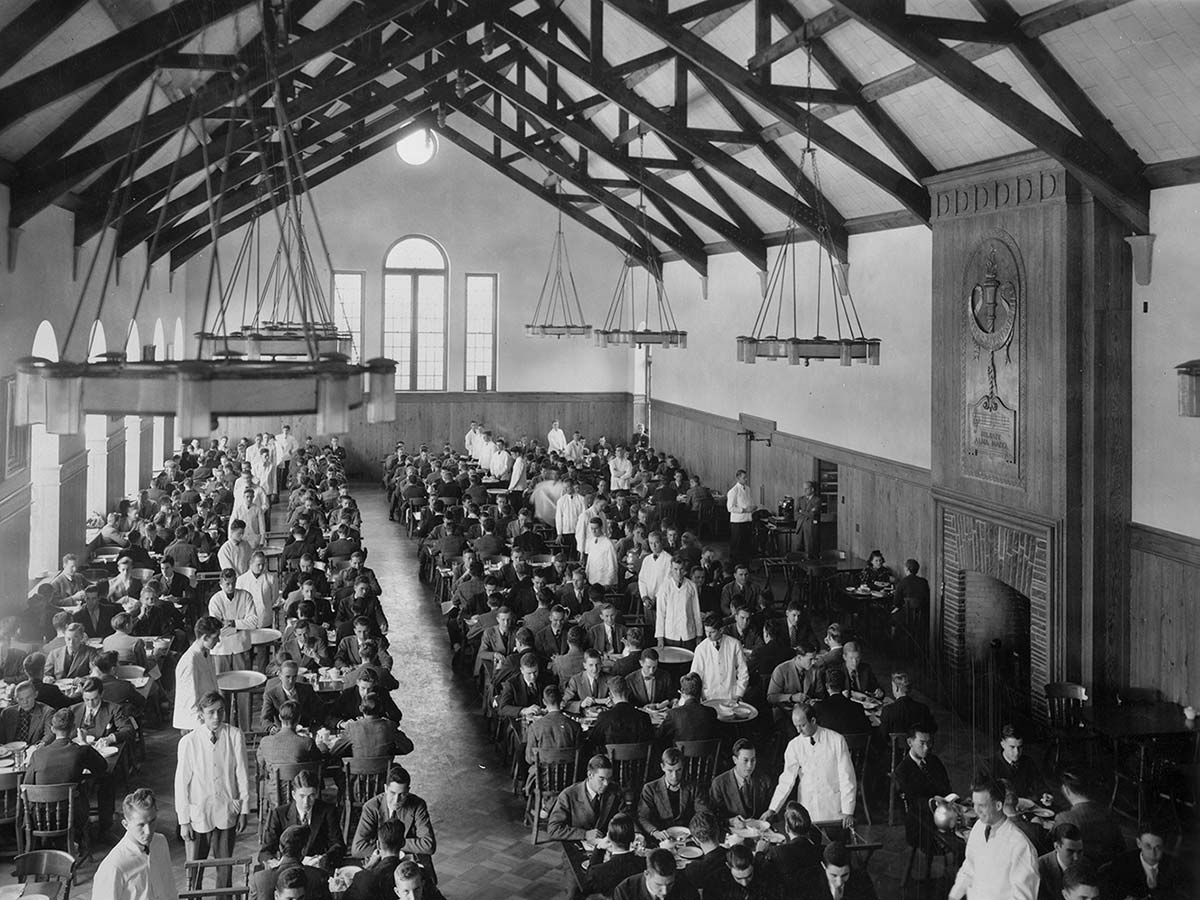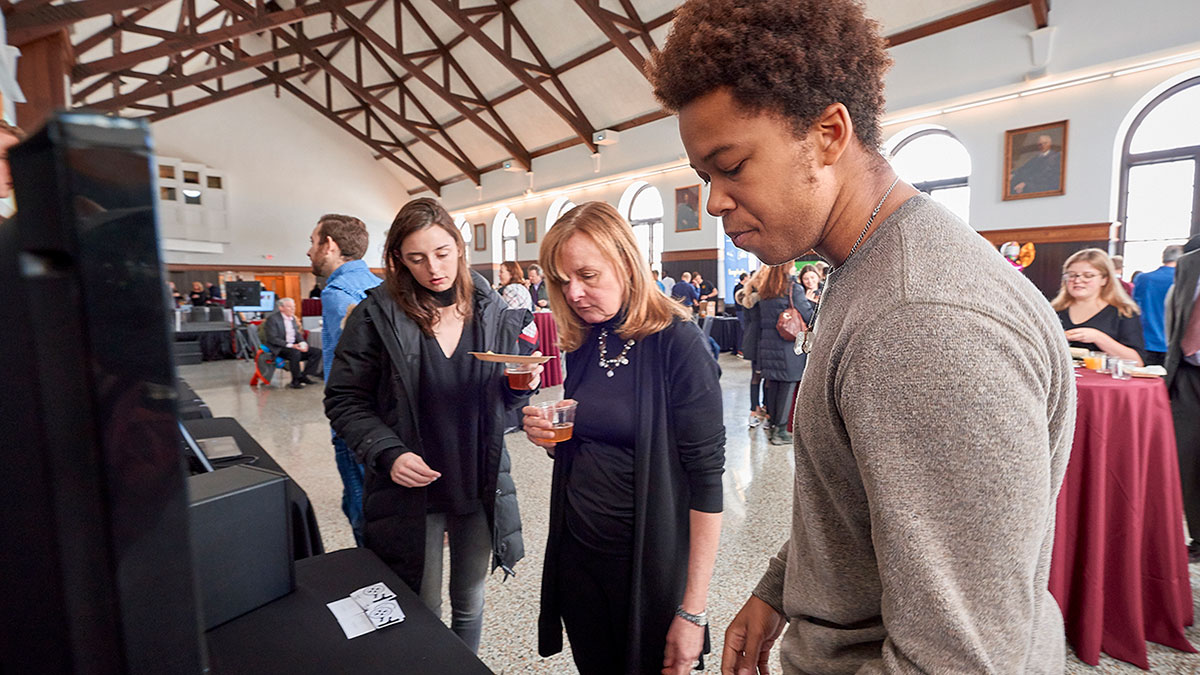By 1935, having successfully weathered the depression and enjoying growing enrollment,1 Colgate was clearly in need of a number of new facilities.
As a brochure for potential donors put it, “We need other buildings — a library, a biological laboratory, a fine arts building, an infirmary, a field house — but none so much as a Student Union.”2

Dining Hall in J.C. Colgate Student Union, circa 1939
Envisioned as a hub for student life, the building that would become the James C. Colgate Student Union was designed to include a dining hall, recreation rooms, a post office, a campus store, and many rooms for housing the university’s burgeoning clubs and activities.
The location, at the corner of College Street and Willow Path, was selected with the logic that every student must pass the corner “at least once, and most students pass many times a day.”2 Like East, West, and Alumni halls, the building was to be constructed with stone from the university quarry, and it would be named after James Colby Colgate in honor of his 50 years of service to the university.2
New York Times coverage of the cornerstone laying on Oct. 24, 1936, stated that the building would offer “facilities for reading and study... and that there will also be a main auditorium suitable for meetings or lectures and it may be arranged so that the university dramatic club, Masque and Triangle, can produce student plays in the room.”3
Dedication
The building was ready for its dedication in time for Homecoming in 1937, and the Syracuse Post Standard reported that, despite rain, Colgate had its biggest homecoming in history, with about 10,000 people in attendance.4
Amid the lengthy downpour, the article reported, some 35 state troopers from Oneida handled traffic of “some 4,000 cars.” Raincoats and rubber shoe covers sold at a brisk pace: “Three hours before game time, while a 12-hour downpour continued, clothing merchants had sold their last rubber and last raincoat. Then the sales turned to oilcloth blue, red and yellow. The oilcloth was turned into hundreds of homemade raincoats...”5
At the dedication, George W. Cobb, Class of 1900, who was credited with raising much of the building’s $250,000 cost, presented a book of donor names to James C. Colgate, “as something you can take home with you since you can’t take the building.”6

Today, the Hall of Presidents hosts many high-profile university events. Photo by Andrew M. Daddio, Office of Communications
James C. Colgate Hall today
Today, while the student union is no longer the dining hall, and the building has undergone multiple changes through the years, clubs and student groups like the Colgate Thirteen and the Maroon-News still call it home.
Donovan’s Pub on the first floor is now a fixture for casual gatherings, and the Hall of Presidents remains an impressive and stately venue for major special events, such as Presidents’ Club dinners and Entrepreneur Weekend. The building received a new roof in 2015 as part of a series of major capital projects.